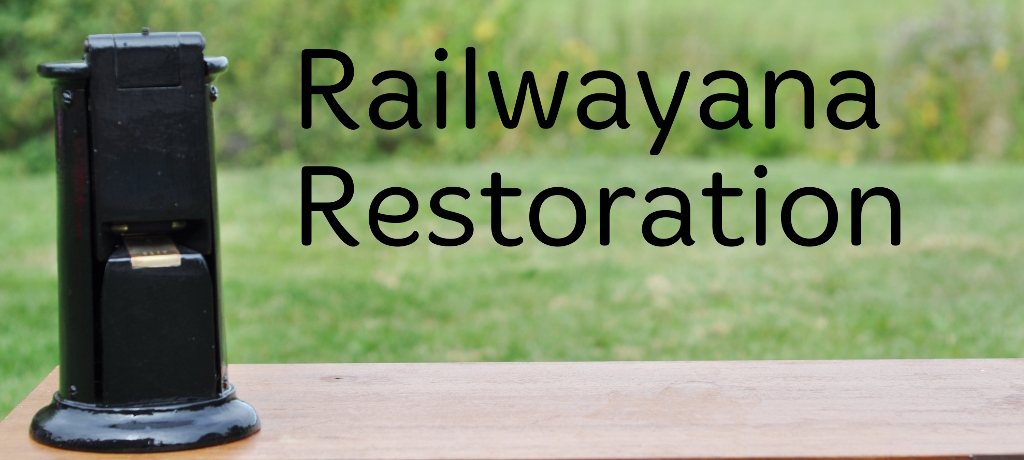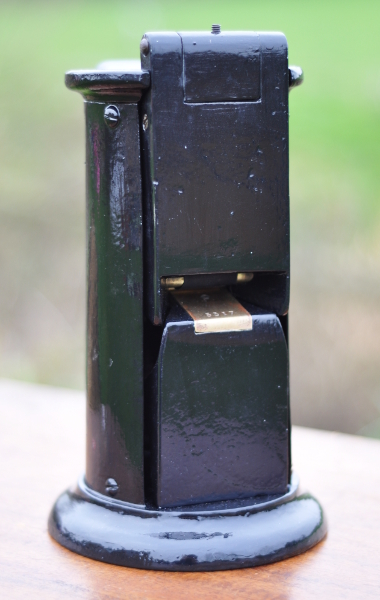
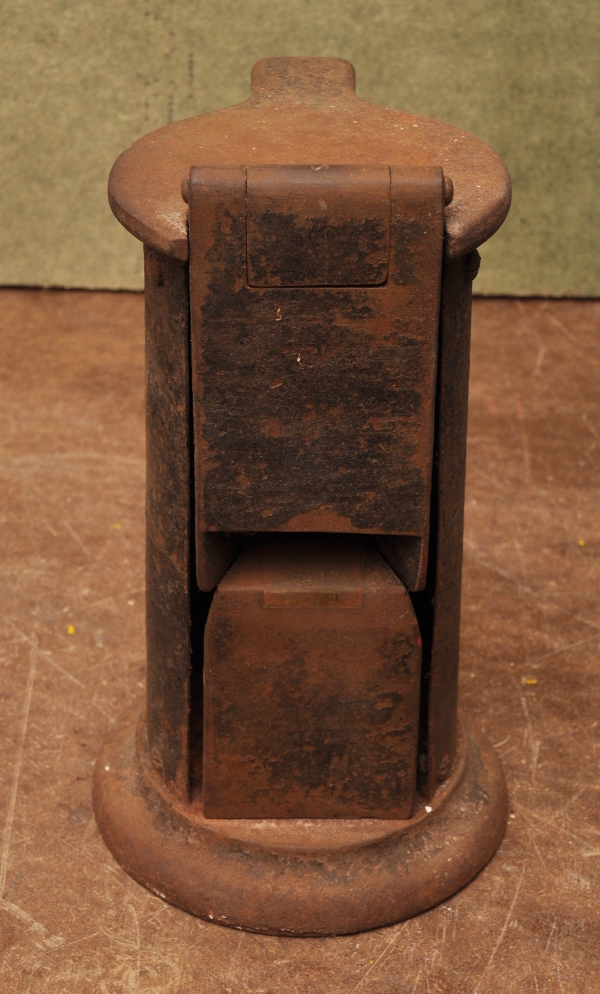 Before and After views
Before and After views
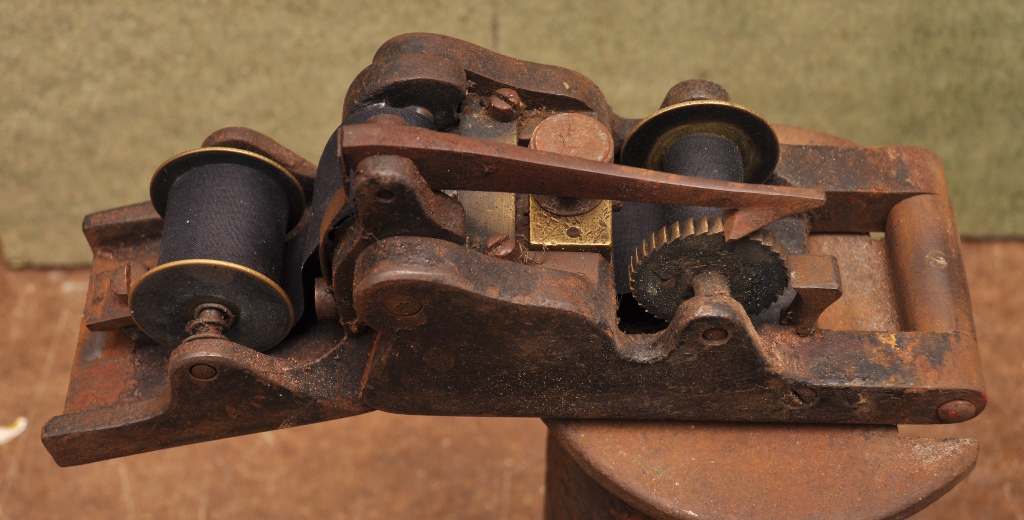
Mechanism in seized condition
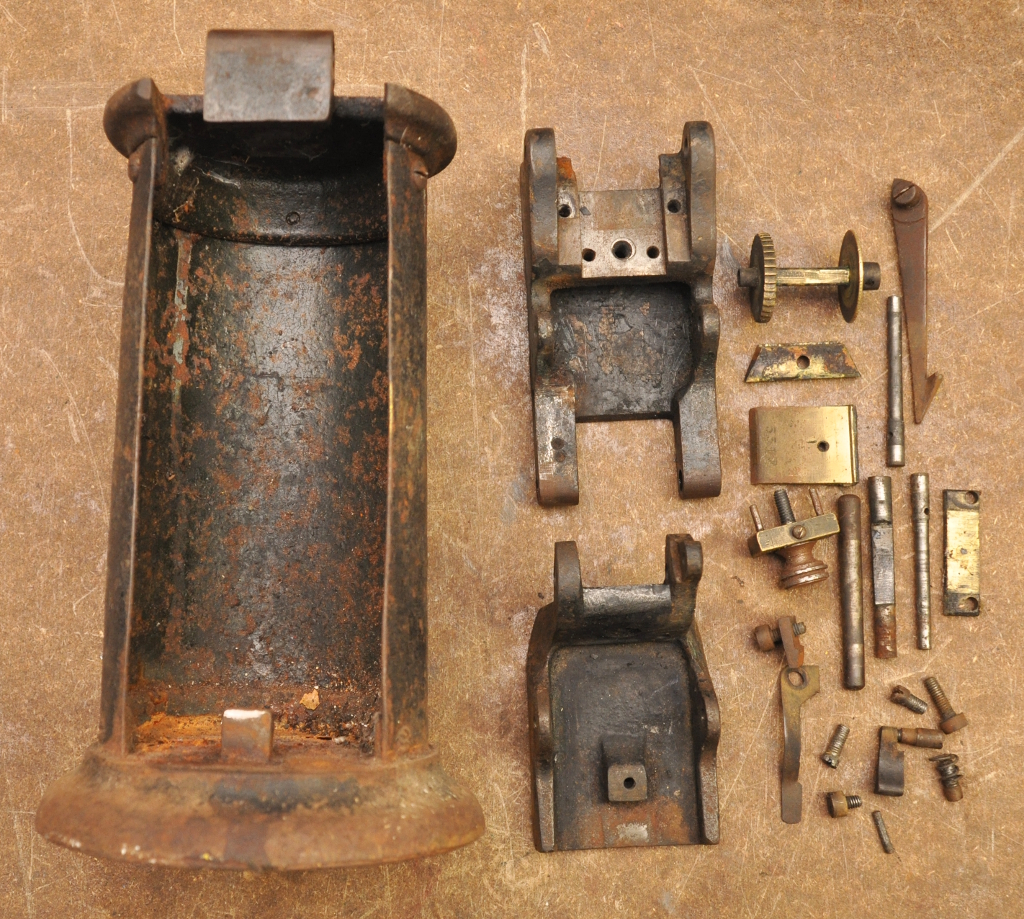
Completely stripped
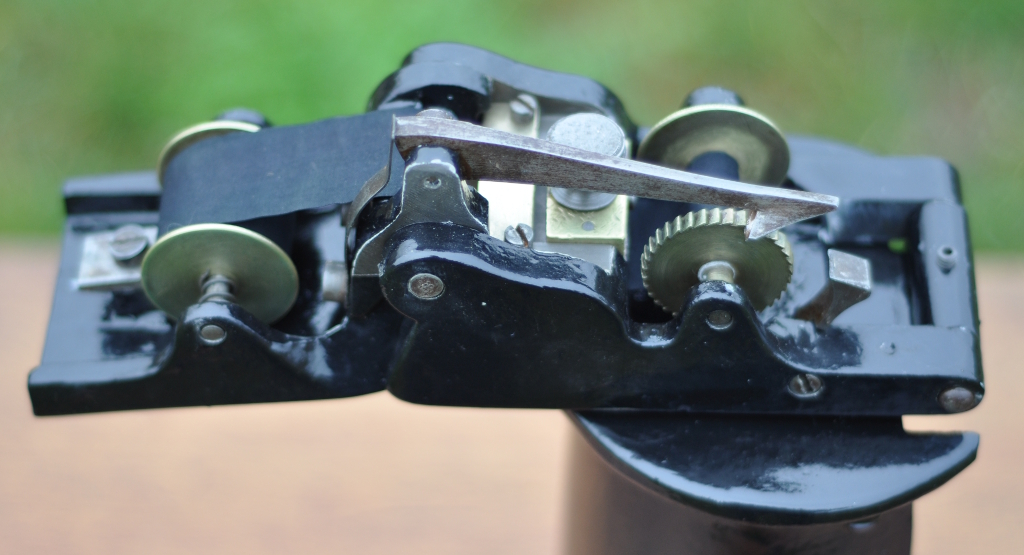
Reassembled and working
Edmondson invented his ticketing system in 1836,
revolutionising how tickets were issued and used, initially for the railways,
but later adopted worldwide in many different areas.
Central to the system was the idea of a standard sized,
serialised ticket, printed in advance and dated at the issuing ticket office as
it was sold. The system therefore needed a method of quickly printing the date
on the ticket, and so Edmondson invented the ticket dating press. The same
basic principle existed in use from the time of invention up until the 1980s in
the UK. Unfortunately I haven’t been able to date my example, but it is
certainly of some age- I’d appreciate it if anyone can help with this based on
the serial number.
This example was bought cheaply through ebay in a rusty,
un-usable condition. Whilst not completely seized, none of the inking ribbon
mechanism was working, and everything else was very stiff from the rust,
so I took the decision to make a full restoration & re-paint.
The first step was dis-assembly. This was relatively
straight-forward after the use of penetrating oil on the fasteners. I managed
to get the whole assembly apart, only needing to drill out one grub screw.
The next step was a combination of de-rusting and paint
removal. The rust was removed using a citric acid solution and neutralised
afterwards with bicarbonate of soda. Any paint remaining after rust removal was
stripped using paint stripper. This left a bare metal frame and a pile of
parts. These were all individually cleaned up, and where necessary masked up
and painted with primer and a gloss black paint.
Parts that were originally bare steel were protected with
Liberon lubricating wax, and the brass parts polished up with Brasso.
The unit was re-assembled. The only new parts needed were a
grub screw and two cotter pins. The ribbon was re-inked with metal stamp ink,
and moving parts given a light oiling.
Altogether this has been a simple, but satisfying project- I
now need to generate some tickets on the printing press to use with it.
Signal Lantern Restoration
I
found this parrafin railway lamp at a recent autojumble, in a bit of a
forlorn state. It is an Adlake lantern that would have been used as the
source of light for a semaphore signal.
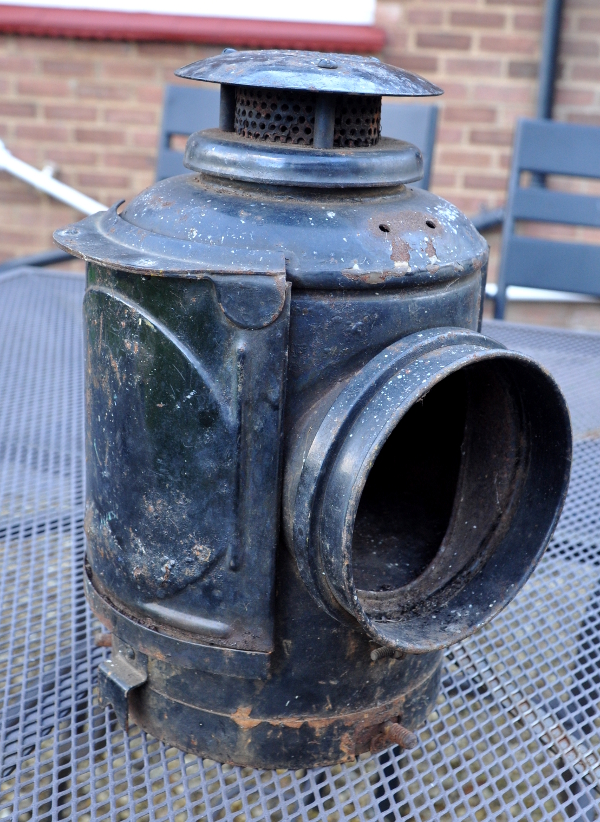
The lantern in need of restoration
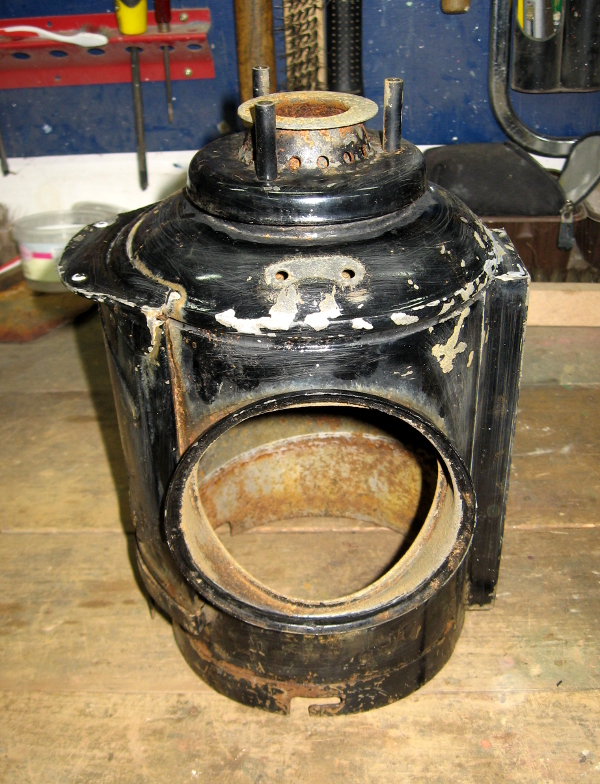
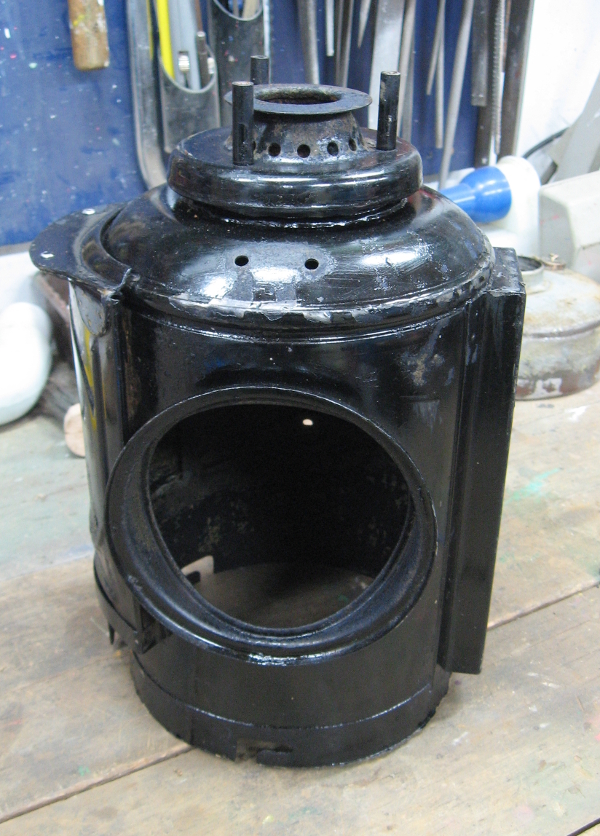
The lamp was given long soak in a citric acid solution to remove the bulk of the rust.
This also freed off the burner reservoir/ fount enabling it to be removed.
Once cleaned and dry 'Kurust' was used on all exposed bare metal and any remaining oxide.
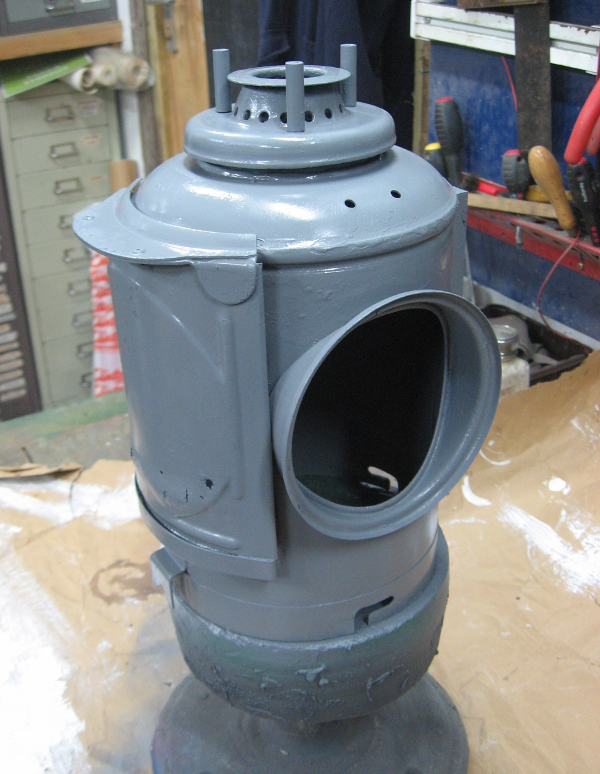
The lantern was primed and painted
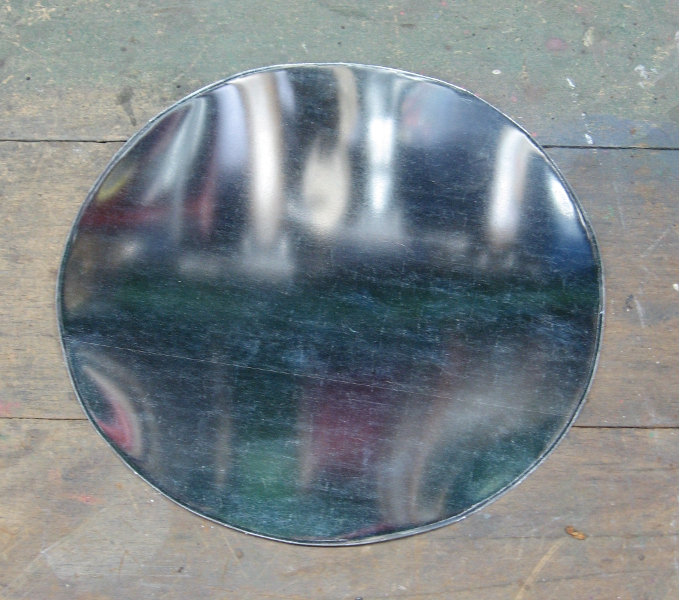
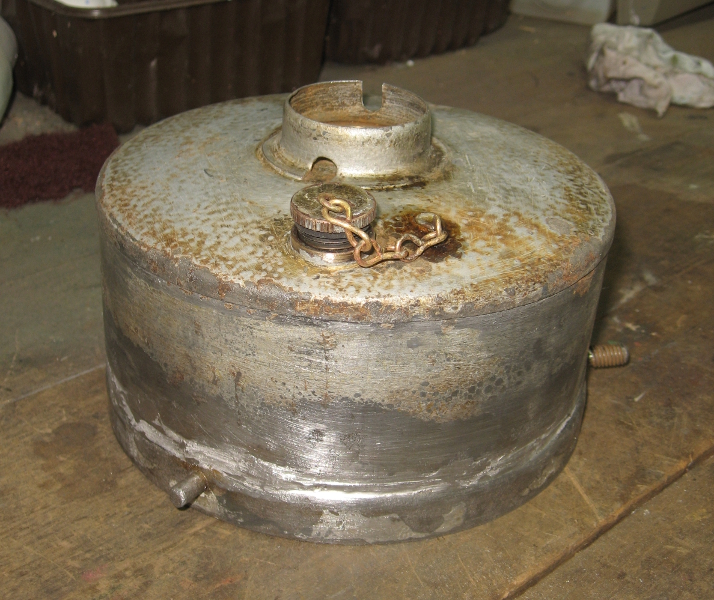
The base of the fount had rusted through and wouldn't hold fluid any more.
I purchased some tin plated steel from Hindleys
Hindleys, cut an new base and soldered it in place.
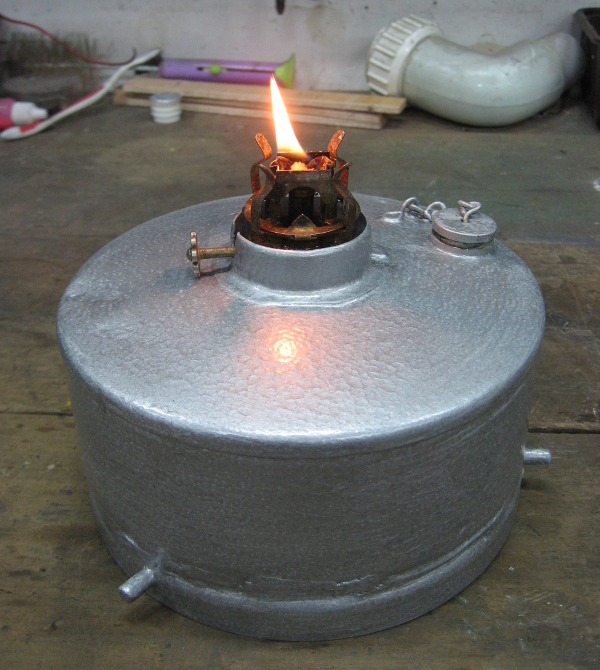
The
repaired fount was given a coat of grey hammered finsh paint, like the
original, a new piece of wick was sourced and the burner tested.
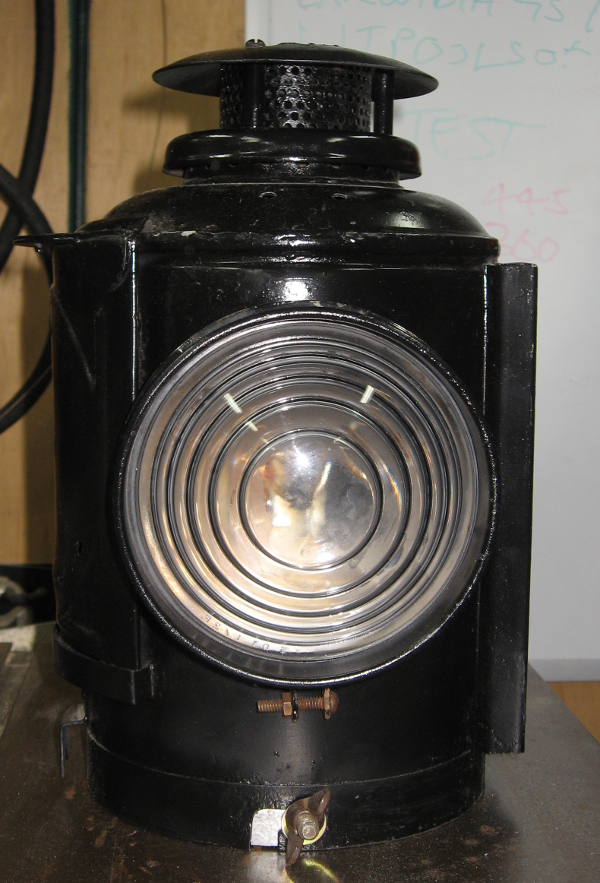
The
lantern was re-assembled. When I bought it, the lens was missing, but
as Adlake are still in business I was able to source a new lens from
the USA as a replacement.
(c) 2017-2020
